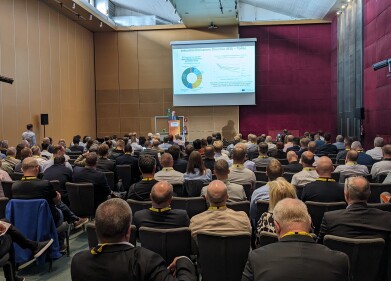Air monitoring
Measuring Climate Change
Apr 08 2008
It has been known for some time that fine particulate matter (PM2.5) has been widely linked to adverse health effects such as asthma. Approximately 70% of particulate mass generated by, for example, bush fires is less than PM2.5 making these particles the optimum size to be carried deep into the respiratory system. Such particulate matter can also adversely affect visibility and is the cause of haze.
New research by DrWenju Cai and TimCowan at the CSIRO now contends that human generated particulates are also affecting the climate across Southern Australia. This is also a global problem as the aerosols contribute to the cooling of the northern hemisphere’s ocean surface. In turn this creates a hemispheric imbalance and heat redistribution throughout the world’s oceans. Ultimately this results in a change in weather patterns.
As Albert Einstein once said, “We can’t solve problems by using the same kind of thinking we had when we created themâ€. Luckily for the future, people’s thoughts are now changing for the better. We are more conscious of the pollutants we are emitting and we aremaking concerted efforts to reduce those levels. Australian company Ecotech is helping industry and public sector organisations, including all levels of government, achieve reduced particulate levels by deploying aerosol monitoring equipment. The latest product is the Aurora Family of
Nephelometers from Ecotech (Australia) has wide applications for use in climate change studies. Nephelometers measure light scattering caused by aerosols using either single or multiple wavelengths.
In the Aurora 3000 Series, three separate wavelengths are used simultaneously which respond to different particulates in the ambient sample thereby enabling the diagnosis of the nature and chemical composition of the matter. For example the blue wavelength will react strongly to fine and ultra fine particles (e.g. wood fire, automobile exhaust), the green wavelength will react strongest to visible pollution (smog) and the red wavelength will react strongly to large particulate matter (pollen or marine derived influences.)
By monitoring particulate matter, industry and councils can manage community concerns and expectations on climate change by providing validated data and reports for dissemination to the general public.
Digital Edition
AET 28.4 Oct/Nov 2024
November 2024
Gas Detection - Go from lagging to leading: why investment in gas detection makes sense Air Monitoring - Swirl and vortex meters will aid green hydrogen production - Beyond the Stack: Emi...
View all digital editions
Events
Jan 12 2025 Abu Dhabi, UAE
Jan 14 2025 Abu Dhabi, UAE
Jan 20 2025 San Diego, CA, USA
Carrefour des Gestions Locales de L'eau
Jan 22 2025 Rennes, France
Safety, Health & Wellbeing LIVE
Jan 22 2025 Manchester, UK



















